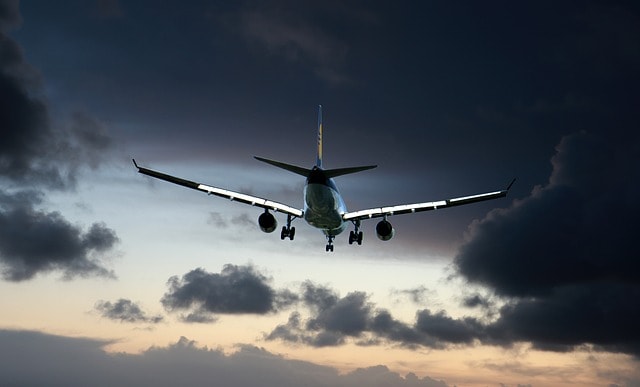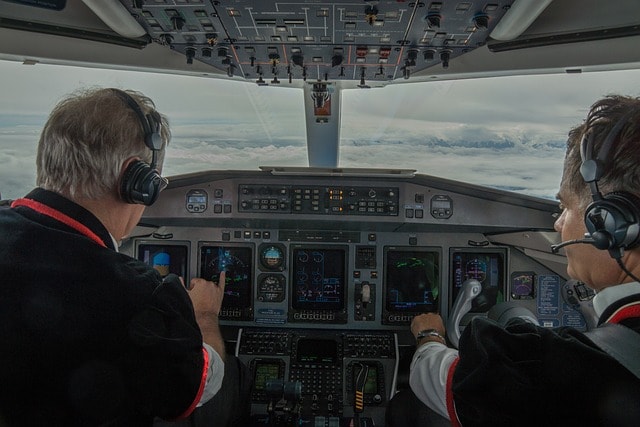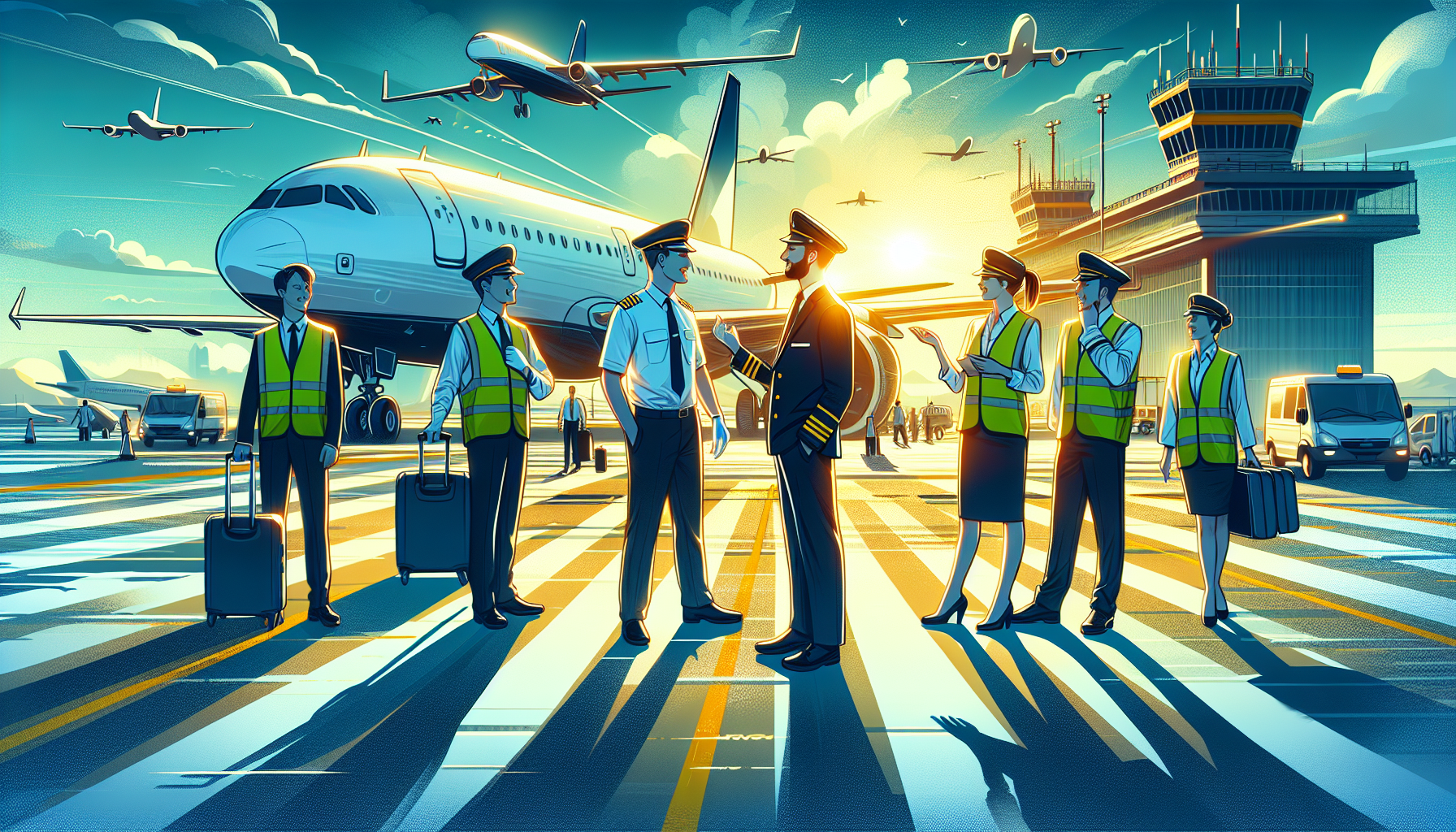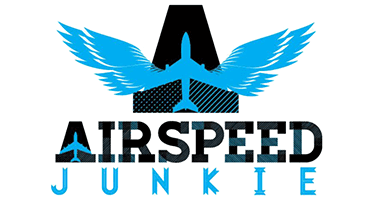A Day in the Life of Commercial Pilots: Responsibilities and Challenges
Ever wondered what it takes to be a commercial pilot? These professionals, known as commercial pilots, are responsible for flying aircraft, ensuring passenger safety, and managing various in-flight tasks. In this article, we explore their daily responsibilities, the training and certification process, and career opportunities in the aviation industry for commercial pilots.
Key Takeaways
-
Commercial pilots are responsible for the safe transportation of passengers and cargo, requiring extensive skills such as self-confidence, situational awareness, and communication abilities.
-
Daily responsibilities include pre-flight checks, weather analysis, creating and filing flight plans, coordination with ground crews and air traffic controllers, and continuous in-flight monitoring and communication.
-
The career progression of commercial pilots involves steps from Certified Flight Instructor to First Officer at regional airlines, and eventually to major airlines, where seniority plays a significant role in job security and salary, with the profession offering high financial rewards and opportunities for global travel.
What Defines a Commercial Pilot?

A commercial pilot is a skilled professional responsible for:
-
Flying and navigating airplanes, helicopters, and other aircraft
-
Transporting passengers and cargo safely and efficiently
-
Adhering to safety protocols to ensure a smooth and comfortable travel experience
-
Handling any situation with confidence and precision
Their top priority is safety, and they must be prepared to handle any situation with confidence and precision.
Commercial airline pilot skills and qualities, which are also essential for international airline pilots, include:
-
Self-confidence
-
Decisiveness
-
Extensive cockpit resource management experience
-
Excellent communication and leadership abilities
-
Situational awareness
-
Coordination
-
Emotional stability
These skills enable them to make quick decisions and maintain composure under pressure, ensuring the highest standards of safety and performance during flights.
Obtaining a Commercial Pilot certificate is a fundamental requirement to become a commercial pilot. Those who aspire to advance further in their careers may pursue an Airline Transport Pilot (ATP) certificate, also known as the airline transport pilot certificate, which requires accumulating at least 1,500 hours of total flight time. This certification process ensures that pilots have the necessary experience and expertise to handle the complexities of commercial aviation.
Daily Responsibilities of Commercial Pilots

Commercial pilots face a daily routine filled with meticulous tasks and responsibilities, all aimed at ensuring the safe operation of flights. One of the first tasks of the day is performing pre-flight checks and flight and test procedures to ensure the aircraft is operationally ready and safe for takeoff. These checks involve inspecting the aircraft’s systems, instruments, and overall condition to identify any potential issues that could affect the flight.
Pre-Flight Briefings: Laying the Groundwork for a Safe Journey
Before each flight, pilots and crew members gather in a designated briefing room to synchronize their efforts. This collaborative session starts with introductions, fostering teamwork among everyone on board. Together, the pilot and co-pilot thoroughly review the upcoming flight’s details—including the flight plan, current and forecasted weather, NOTAMs (Notices to Airmen), estimated flight time, fuel requirements, and any unique performance considerations for the day.
Once these technical elements are covered, pilots relay essential information to the flight attendants. This includes giving updates on the expected weather conditions en route, the approximate duration of the journey, anticipated passenger numbers, and the preplanned route. The briefing also reviews procedures for normal conditions and outlines specific protocols for handling any irregular or emergency scenarios, ensuring every crew member is fully prepared before takeoff.
Prior to takeoff, pilots scrutinize weather conditions and other pertinent data to foresee potential in-flight challenges. They also create and file detailed flight plans that include the intended route, altitudes, and speeds. This careful planning helps in choosing the most efficient and safe routes, ensuring a smooth journey for passengers and cargo.
Another key aspect of a pilot’s day-to-day tasks involves coordination with ground crews and air traffic controllers. Pilots work closely with ground crews to ensure timely departures and arrivals, managing changes in fuel supplies, loads, and routes as needed. They also communicate with air traffic controllers to obtain takeoff and landing clearances, ensuring compliance with aviation regulations and safe navigation.
In-flight, pilots are tasked with:
-
Continuous monitoring of engine operations and aircraft systems to confirm proper functioning
-
Staying in constant communication with control towers to receive updates and instructions
-
Making adjustments as necessary to maintain safety and efficiency
How Often Do Pilots Use Autopilot?
Modern commercial flights rely heavily on advanced autopilot systems to maximize efficiency and reduce pilot workload during the journey. Pilots typically engage autopilot shortly after takeoff—usually within the first 5–10 minutes—and then disengage it as they prepare for landing, again about 5–10 minutes before touching down.
This means that, on most flights, autopilot controls the aircraft during the cruise phase, which often accounts for the majority of the flight time. Meanwhile, the pilots focus on monitoring flight progress, handling communications with air traffic control, and managing essential onboard systems—all without sacrificing safety.
Manual control is essential during critical flight stages such as takeoff, initial climb, final approach, and landing. However, for the vast remainder of the flight—sometimes as much as 80–90% of the journey—the autopilot is in command, allowing pilots to oversee operations with precision and maintain readiness for any unexpected situations.
This vigilant monitoring and communication, often facilitated by air traffic control, are crucial for handling any unexpected situations that may occur during the flight.
Post-landing, pilots undertake duties such as coordinating with ground crews for passenger disembarkation and cargo unloading. They also complete necessary documentation and reports, ensuring all operational details are accurately recorded. This comprehensive approach to their daily responsibilities highlights the dedication and attention to detail required to be a successful commercial pilot.
In-Flight Rest for Pilots
Yes, pilots are permitted to take controlled rest breaks in the cockpit during flight, particularly on longer journeys. This practice, known as "controlled rest," is carefully regulated to maintain the highest safety standards. During these short breaks, one pilot remains fully alert at the controls while the other takes a brief rest, typically lasting no more than 40 minutes.
To ensure safety, the pilot who remains on duty stays strapped in and closely monitors all communications and aircraft systems. It’s standard procedure for a senior member of the cabin crew to be informed whenever a pilot is resting, so they can remain attentive to any developments. These rest periods help pilots stay sharp and minimize fatigue, ensuring they're prepared to respond effectively to any situation throughout the flight.
Maximum Number of Flight Sectors in a Single Day
Pilots can be scheduled to complete multiple flight sectors within a single day, typically depending on the duration of each segment and regulatory duty limits. On routes featuring shorter flights—such as regional hops of 40 to 50 minutes—it's not uncommon for a pilot to complete up to six sectors in one duty period. Each sector is carefully planned with sufficient turnaround time, often around 30 minutes, allowing for pre-flight checks, refueling, boarding, and addressing any operational needs before the next departure.
These schedules are meticulously designed to comply with aviation regulations that govern maximum allowable duty hours, ensuring crew alertness and safety remain uncompromised throughout the day. Whether flying between major hubs or remote regional airports, pilots must balance efficiency with strict adherence to both company policies and international safety standards.
What Happens If a Pilot Becomes Sick or Unfit to Fly?
Pilots, like anyone else, can occasionally experience illness or circumstances that make them unfit to operate an aircraft. When this occurs, established protocols ensure that safety is never compromised.
If a pilot feels unwell before a scheduled flight, they promptly notify the airline’s crewing or scheduling department. This early communication allows the company to activate a backup plan. Most airlines maintain a roster of reserve or "standby" pilots—qualified crew members who are ready to step in at short notice.
These standby pilots are typically required to remain within a set distance from the airport (often able to report for duty within an hour), enabling the airline to seamlessly cover sudden absences. This system is designed to maintain the highest safety standards while minimizing delays for passengers and cargo.
Bird Strikes: Frequency and Mitigation Strategies
Bird strikes are a relatively common concern in aviation, particularly during takeoff and landing phases when aircraft are flying at lower altitudes. While most bird strikes result in only minor damage, they can pose serious risks to flight safety, especially if a bird is ingested into an engine.
To minimize these risks, airports implement a variety of bird hazard mitigation strategies. Common measures include:
- Wildlife management programs that monitor and control bird populations around airport areas.
- Habitat modification near runways to make the environment less attractive to birds, such as managing grass length and removing standing water.
- Use of deterrent devices like pyrotechnics, predator calls, and even trained falcons to discourage birds from gathering near active runways.
- Radar and visual tracking systems to detect flocks in real time, enabling air traffic controllers to warn pilots of heightened bird activity.
Pilots also play a vital role by remaining vigilant in high-risk areas and following recommended procedures such as adjusting flight paths and speeds when necessary. Through these combined efforts, the aviation industry continues to enhance safety and reduce the likelihood of bird strikes affecting flight operations.
Returning Home: How Pilots Approach the Commute
Once the post-flight procedures are wrapped up and all reports are complete, pilots face one last consideration—the journey home. Given the demanding nature of their job, especially after lengthy or overnight flights, pilots carefully assess their own levels of alertness and fatigue before getting behind the wheel.
Safety doesn’t end when the aircraft is parked. Many pilots pause to evaluate whether they are fit to drive themselves or need to seek out alternatives, such as booking a rideshare through services like Uber or Lyft, taking a taxi, or using public transportation. Some airlines even provide crew shuttles at major airports to support safe travel for their staff.
When fatigue is significant, it’s common for pilots to prioritize rest—perhaps grabbing a meal and a coffee at a nearby terminal café or spending time in an airport lounge—before starting the trip home. This careful decision-making reflects the same cautious, responsible approach pilots apply to every other aspect of their profession, putting safety first for themselves and everyone else on the road.
When Do Pilots Eat During Flights?
Pilots typically enjoy their meals during the cruising phase of the flight—when the aircraft is at a steady altitude and everything is running smoothly. This period provides the best opportunity for pilots to take turns having their meals without interruption, ensuring that one pilot is always focused on monitoring the controls and communications.
Airlines also have a few important protocols in place regarding meals in the cockpit. Chief among them: pilots are generally served different meal options. This precaution is designed to minimize the risk of both pilots being affected by the same food-related issue, such as food poisoning—a rare occurrence, but one airlines are keen to avoid for safety reasons. Pilots never eat at the same time, so if one is dining, the other remains fully alert and in command.
This carefully coordinated approach to meal breaks reflects the aviation industry’s commitment to maintaining high standards of safety and operational continuity—even in something as routine as lunch at 35,000 feet.
Types of Commercial Pilots
Commercial pilots can explore various specializations within the aviation industry, each presenting unique challenges and rewards. Charter pilots, for instance, operate aircraft for private clients on non-scheduled routes, providing a personalized flying experience tailored to the needs of their passengers. These pilots often enjoy the flexibility and variety of flying to different destinations without the constraints of a fixed schedule.
Corporate pilots, on the other hand, fly company executives or cargo for businesses, often on customized schedules. They ensure that business travel is efficient and comfortable, adapting to the specific requirements of their corporate clients. Their role is crucial in facilitating the smooth operation of business activities across different locations.
Air tour pilots offer passengers breathtaking aerial views of scenic areas, making sightseeing flights an unforgettable experience. These pilots not only need exceptional flying skills but also the ability to provide engaging commentary and ensure the safety and comfort of their passengers during the tour.
Agricultural pilots, also known as crop dusters, play a vital role in the agricultural industry. Their work involves:
-
Spraying pesticides and fertilizers over farmland
-
Ensuring the health and productivity of crops
-
Requiring precision and expertise in low-altitude flying
Their work is essential for the agricultural industry.
Medical evacuation pilots, or medevac pilots, transport patients in emergency situations, providing critical care during flights. Their role is vital in saving lives, often requiring them to fly under challenging conditions to ensure timely medical assistance.
Cargo pilots transport goods and freight, often on a fixed schedule for companies. They play a crucial role in the logistics and supply chain industry, ensuring that goods are delivered promptly and safely to their destinations.
Flight Training and Certification Process

The journey to becoming a commercial pilot commences with a rigorous training and certification process, which starts with earning a Private Pilot certificate. This initial certification focuses on fundamental flight skills in a single-engine airplane, laying the foundation for more advanced training, such as obtaining a commercial pilot license. Aspiring pilots must demonstrate proficiency in basic flight maneuvers, navigation, and communication to obtain this certificate.
Following this, acquiring an Instrument Rating is the next step, enabling pilots to undertake flights in various weather conditions using instruments. This rating is crucial for commercial pilots, as it enhances their ability to safely navigate through adverse weather and low-visibility conditions. Following this, pilots must obtain a Commercial Pilot certificate by meeting specific experience requirements and flying to a higher standard. This certification is a prerequisite for engaging in commercial flight operations and ensures that pilots possess the necessary skills and knowledge.
To further advance their careers, pilots often obtain additional certifications and ratings. Some of these certifications and ratings include:
-
Flight Instructor certificate: This allows pilots to teach new pilots and accrue flight hours while earning a living.
-
Multi-engine rating: Adding this rating to a Commercial Pilot certificate is essential for flying larger passenger airliners, expanding career opportunities.
-
Instrument rating: This allows pilots to fly in low visibility conditions and adds versatility to their skillset.
These additional certifications demonstrate a pilot’s versatility and expertise in handling different types of aircraft.
The financial aspect of pilot training can be a significant challenge, with programs like the Ascend Pilot Academy offering low-interest financial aid and stipends to make the process more accessible. The Horizon Air Pilot Development Program also provides opportunities for students to fly as first officers after meeting minimum requirements and may offer training funds for new ratings. Despite the high cost, many pilots enter study-now-pay-later programs to finance their training, understanding that the investment will pay off in the long run.
Specialized Training for "Captain Only" Operations
Certain flight scenarios—such as operating in extremely low visibility or at challenging airports—demand an added layer of expertise that goes beyond standard commercial pilot training. "Captain only" operations are precisely that: situations where only the captain is permitted to conduct takeoff and landing due to the complexity or risk involved.
To prepare for these demanding situations, captains must undergo specialized training that typically includes:
- Intensive ground school: Captains receive advanced briefings on the regulatory and procedural differences specific to "captain only" airports—often locations with unique hazards like short runways, mountainous terrain, or unpredictable weather. Examples in Europe include Madeira (Portugal), Tivat (Montenegro), and Skiathos (Greece).
- Simulator sessions: Pilots hone their skills by practicing takeoffs and landings at these airports in a full-motion flight simulator, which replicates low visibility, difficult approaches, and emergency procedures. This realistic practice is essential for building the confidence and muscle memory needed when conditions are less than ideal.
- Line training with experienced instructors: After demonstrating proficiency in the simulator, captains receive hands-on experience under the watchful eye of a training captain or check airman, often with special emphasis on decision-making, crew communication, and adherence to strict operating procedures.
Successfully completing this training qualifies captains to safely handle operations where they alone are authorized to land or depart, ensuring adherence to both safety standards and airport-specific regulations.
Workplace Environment for Commercial Pilots

Commercial pilots operate in a workplace as dynamic as the skies they traverse. Pilots spend significant time in aircraft cockpits, airport settings, and training facilities. The cockpit is a confined space that requires pilots to remain highly focused and comfortable in small, controlled environments. This setting demands a high level of concentration and the ability to manage multiple tasks simultaneously.
Working harmoniously with other crew members, including co-pilots and flight attendants, forms an integral part of a pilot’s job. Effective teamwork and communication are crucial for ensuring a smooth and safe flight experience. Pilots must be adept at working closely with their colleagues to handle various in-flight situations and coordinate efforts for passenger safety and comfort.
Pilots need to undertake continuous training, a significant aspect of their career, which necessitates considerable time investment in training facilities to keep their skills current. They must also adapt to working in various airport settings and environments, which can vary significantly depending on the flight route and destination. This adaptability is essential for handling the diverse challenges that come with the profession.
Commuting to Work: How Pilots Get to the Airport
Pilots’ commutes are as varied as their flight schedules. Some choose the convenience of driving their own vehicles to the airport, making use of onsite or offsite parking, while others opt for public transportation—think Amtrak, local subway lines, or regional bus routes—especially in major metropolitan areas where parking can be tricky or expensive.
For those living farther away from their assigned airport base, airlines may step in with commuter benefits. These can include travel reimbursements, company-arranged shuttles, or even agreements with rideshare services like Uber and Lyft to help cover the journey. A number of large carriers also provide “jump seat” or “commuter pass” privileges, allowing pilots to travel as passengers on earlier flights to ensure they arrive ahead of duty time.
Ultimately, the method chosen often depends on the pilot's proximity to the airport, their personal preferences, and the specific policies of their employer. Being adaptable and planning extra time for travel is key, ensuring that pilots arrive with plenty of time to participate in crucial pre-flight briefings and preparation.
Career Pathways and Progression
Typically, the career progression for commercial pilots begins by accumulating hours as a Certified Flight Instructor. This initial step allows pilots to gain valuable flight experience while teaching new student pilots. It is a common pathway for accumulating the necessary flight hours to qualify for more advanced positions in the aviation industry.
Once sufficient flight hours are accrued, many pilots move on to become First Officers at regional airlines. Regional airlines often serve as stepping stones, providing pilots with the experience needed to join major airlines. This stage of a pilot’s career is crucial for honing their skills and gaining exposure to more complex flight operations.
Joining a major airline is a significant milestone in a pilot’s career, with seniority playing a crucial role in determining salary, benefits, and job security. Seniority impacts various aspects of a pilot’s professional life, including their monthly schedule, base location, and progression from first officer to captain. Pilots with higher seniority enjoy greater flexibility in choosing their schedules, vacations, home base, and aircraft. They also have increased job security, as they are less likely to be laid off during furloughs.
Earning top pay through seniority allows pilots to save significantly for retirement. The career span of a commercial pilot can be quite long, up to the mandatory retirement age of 65. This longevity, coupled with the financial rewards of seniority, makes a career as a commercial pilot both lucrative and fulfilling.
Challenges and Rewards of Being a Commercial Pilot
Being a commercial pilot comes with its share of challenges. One of the most significant challenges is the irregular work schedules, which can vary daily and include overnight layovers. This unpredictability can lead to an unpredictable lifestyle, impacting personal and family life. Additionally, the demands of the job can result in stress, fatigue, sleep deprivation, and unhealthy eating habits, all of which can affect a pilot’s health and job performance.
Flying in adverse weather conditions is another major challenge for commercial pilots. Navigating safely through thunderstorms, strong winds, and turbulence requires exceptional skill and concentration. Pilots must be prepared to handle these challenging conditions while ensuring the safety and comfort of their passengers.
Regardless of these challenges, the profession extends numerous rewards. Commercial pilots enjoy:
-
High salaries
-
The opportunity to travel the world, experiencing new cultures and breathtaking views from the sky
-
The sense of accomplishment and the thrill of flying
These factors make the profession highly rewarding for those passionate about aviation.
Balancing the challenges with the rewards is a crucial aspect of being a commercial pilot. While the job demands a high level of dedication and resilience, the financial benefits, travel opportunities, and the joy of flying make it a fulfilling career choice for many.
The Importance of Rest and Well-Being for Pilots
Rest isn’t just a luxury for commercial pilots—it’s a vital part of their job. Being well-rested ensures a pilot can remain focused, make sound decisions, and handle any in-flight challenges that might arise. Fatigue is more than just feeling sleepy; for pilots, it can impact everything from reaction times to problem-solving abilities, ultimately affecting the safety of the entire crew and passengers.
To maintain top performance, pilots prioritize their health both on and off duty. After a demanding flight, many pilots have established routines to help them unwind and recharge. These often include having a nutritious meal, practicing good sleep hygiene, and engaging in regular physical activity such as running or strength training. Aiming for consistent, quality sleep—ideally eight hours a night—allows pilots to stay alert, even when early starts or time zone changes throw their schedules off-balance.
Despite their best efforts, pilots are human and can sometimes fall ill or simply need extra recovery time. Airlines have contingency plans for this: if a pilot feels unfit to fly, they promptly notify the crewing department. When this happens, a backup—or “standby”—pilot steps in, often needing to be ready to report to the airport within an hour’s notice. This extra layer of preparation helps ensure that flights remain safe and on schedule, even if unexpected circumstances arise.
Paying close attention to rest and overall well-being isn’t just about self-care; for pilots, it’s an inseparable part of professional responsibility and delivering a safe, comfortable journey for everyone on board.
Employment Outlook and Salary Expectations
The job market for commercial pilots looks promising, projected to witness a 4 percent growth from 2022 to 2032. As the air travel industry continues to recover and expand, the demand for airline and commercial pilots is expected to rise. This growth will create approximately 16,800 job openings annually over the decade, driven by the need to replace retiring pilots and those transferring to other occupations.
Several factors contribute to the increasing demand for pilots. The ongoing pilot shortage and rising air travel demand have led major airlines to substantially increase pilot salaries. For instance, Delta Air Lines pilots received a 34% raise over four years, including an immediate 18% raise upon signing. Similarly, United Airlines and Alaska Airlines have also agreed to significant pay increases for their pilots.
Factors such as experience, aircraft size, and the type of pilot role influence the salary expectations for commercial pilots. In 2023, the median annual wage for commercial pilots was $113,080, while airline pilots, copilots, and flight engineers earned a median annual wage of $250,050. Pilots at major airlines can earn an average annual salary of around $222,000, with regional airline pilots earning approximately $86,579 per year.
The potential lifetime earnings of a pilot can be substantial, with the highest earners making over $24 million across their careers. Some senior, long-haul captains at major airlines can earn a base salary of around $600,000 a year. These figures highlight the lucrative nature of the profession, making it an attractive career choice for many aspiring pilots.
Summary
In summary, the life of a commercial pilot is a blend of rigorous training, diverse responsibilities, and continuous learning. From the initial stages of earning a Private Pilot certificate to navigating the complexities of seniority in major airlines, the journey is challenging yet rewarding. Despite the irregular schedules and demanding conditions, the profession offers high salaries, travel opportunities, and the unparalleled joy of flying. As the aviation industry continues to grow, the future looks bright for those who choose to embark on this high-flying career. For anyone passionate about aviation, becoming a commercial pilot is a fulfilling and lucrative career path.
Frequently Asked Questions
What is the first step to becoming a commercial pilot?
The first step to becoming a commercial pilot is to earn a Private Pilot certificate, which focuses on fundamental flight skills in a single-engine airplane.
How many flight hours are required for an Airline Transport Pilot (ATP) certificate?
You need to accumulate at least 1,500 hours of total flight time to obtain an ATP certificate.
What are some challenges faced by commercial pilots?
Commercial pilots often face irregular work schedules, stress, fatigue, and the challenge of flying in adverse weather conditions. These factors can significantly impact their work and personal life.
What types of commercial pilots are there?
There are various types of commercial pilots, including charter pilots, corporate pilots, air tour pilots, agricultural pilots, medevac pilots, and cargo pilots.
What is the employment outlook for commercial pilots?
The employment outlook for commercial pilots is positive, with the job market projected to grow by 4 percent from 2022 to 2032, driven by increased air travel demand and pilot retirements.
How Do Pilots Prepare Personally Before a Flight?
Preparation begins well before stepping foot on the tarmac. Hours ahead of departure, pilots review all available flight information using digital tools such as iPads—an airline staple these days. This early start allows them to access and download critical documents, like up-to-date flight plans, which are typically released a few hours before a scheduled takeoff.
Detailed preparation involves scrutinizing several key factors:
- Reviewing the passenger manifest and baggage information to confirm final headcounts and weight
- Calculating total aircraft weight and fuel requirements for the entire trip, adjusting for any last-minute changes
- Analyzing current and forecasted weather for the departure point, destination, and any potential alternate airports
- Checking the operational status of the assigned aircraft to ensure all systems are in order
- Performing critical calculations for takeoff and landing performance, tailored to the day’s airport conditions
By tackling these tasks in advance, commercial pilots ensure that once they arrive at the airport, they are fully informed and ready to work seamlessly with the rest of the crew, setting the stage for a safe and efficient flight.
Are Pilots Allowed to Have Casual Conversations During Flights?
While pilots maintain their focus on safety-critical tasks, especially during takeoff, landing, and other crucial phases of flight below 10,000 feet, there are moments when more relaxed conversations are permitted. Aviation regulations, such as the FAA’s “Sterile Cockpit Rule,” prohibit non-essential chatter during these periods to ensure full attention to flight operations.
However, once the aircraft is safely cruising above 10,000 feet and all operational procedures are in order, pilots may engage in casual conversation. This interaction not only helps build camaraderie in the cockpit but can also provide a brief mental break during the less demanding stretch of a long flight. Even so, pilots remain attentive and ready to return focus to their duties should any operational need arise.








1 comment
madhukar
This blog offers a great inside look at the day-to-day life and challenges faced by commercial pilots. It’s impressive to see how much responsibility and skill the role demands—truly a high-stakes and rewarding profession!
https://fci.aero/